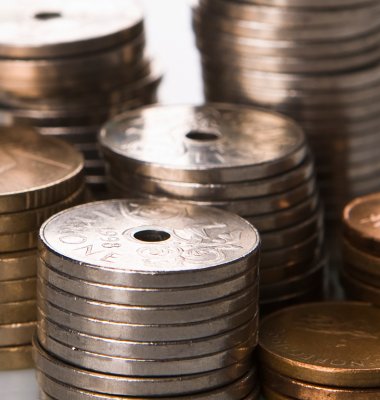The prices Norwegian producers receive for their goods had an overall price decrease from January to February, according to figures from producer price index (PPI).
Lower Consists of Extraction of oil and natural gas, refined petroleum products as well as electricity, gas and steam had the strongest impact on the total drop in the PPI from last month.
– In particular, the price of natural gas has fallen significantly in recent months. At the same time, we observe fairly stable prices in the manufacturing industries, says Espen Kristiansen, section head at Statistics Norway.
Energy prices have fluctuated considerably in the last couple of years, and have affected the total PPI more in these years compared to previously years.
The price index for extraction of crude oil and natural gas peaked in August 2022, when gas prices were at record highs. Thereafter, the index mostly declined until summer last year. In the autumn of 2023, prices rose again, before we saw a new price drop during the last four months of 2024. Not since July 2021 has the price index for extraction of oil and natural gas been lower than in latter month. Natural gas prices have fallen continuously over the last three months, while the oil price rose again in February after four months with price decreases.
Prices within In Norway, production and distribution of electricity are the principal parts of this group fell for the third month in a row and is now 16.6 per cent below the level in February 2023. The price change from January to February was 13.6 per cent.
Energy goods also includes refined petroleum products, in which prices fell for the fourth month in a row in February.
Divergent price changes in manufacturing
After manufacturing prices peaked in July 2022, developments have been relatively stable, with minor fluctuations around a historically high level. In February there was again a slight increase in manufacturing prices.
– Since the beginning of last year, the manufacturing industry has been characterized by variations in price developments in different industries, which roughly offsets each other, says Espen Kristiansen.
There have also been different price developments on prices to the domestic versus the foreign market.
Norwegian-produced manufacturing goods sold in the Norwegian market had a slight price increase in February, while prices in exported goods moved in the opposite direction.
– The tendency over the past year has been a reduction in export prices from high levels, while prices in the domestic market have risen steadily, says Espen Kristiansen.
Prices in the food industry increased for the second month in a row, largely due to higher prices of fish products, but last month the group dairy products and ice cream also had a major influence on the total price rise on food. In February there was a steady price increase in most food groups.
It was also the second month in a row with price increases in machinery and equipment, while for fabricated metal products prices rose for the third month in a row, up 1.7 per cent from January to February and up 46 per cent compared to February 2021.
Prices of basic chemicals fell by 11.7 per cent in February. Here prices went in the opposite direction last month, with an increase of 16.7 per cent. This is a group where prices have fluctuated somewhat, particularly since summer last year.
